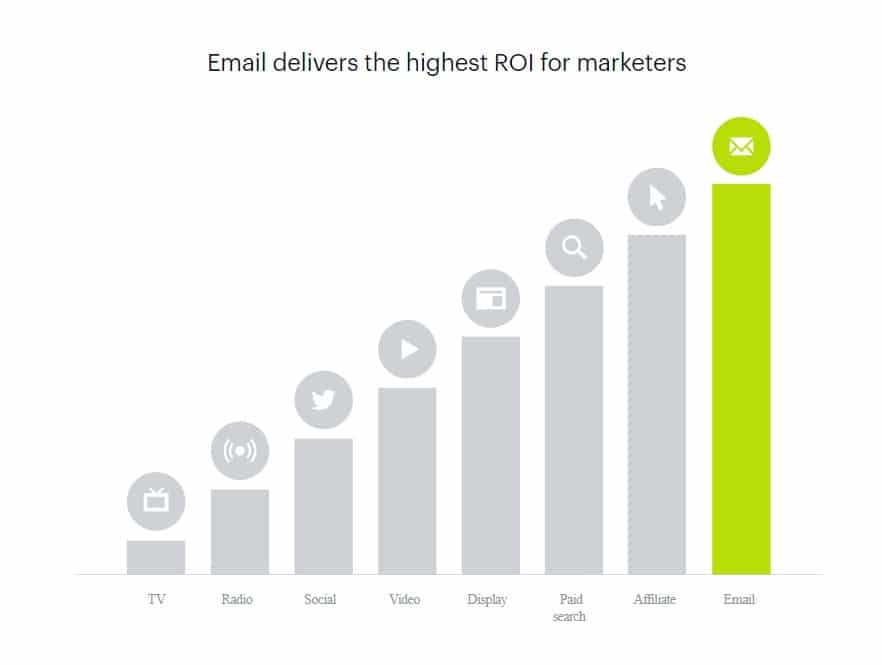Long-lasting customer relationships are essential to eCommerce success because repeat sales require a smaller investment than new sales and make up a majority of most businesses’ revenue. Some estimates say as much as 80% of your revenue will come from 20% of customers. If you can turn that 20% into lifelong shoppers, your path forward becomes simpler and more manageable. Everything gets easier when you’ve got fans.
The question about how to build long-lasting customer relationships is tricky, but there are many tools designed to help. It may feel like something generally outside your grasp because of all the touchpoints and interactions involved. However, there are many tools designed to automate and improve these intersections. And thankfully, this list will help you start building out that tech stack designed with recurring customer sales in mind.
Start with a robust eCommerce CRM
Many businesses have a toolkit that focuses on tracking customer data. Customer relationship management systems (CRMs) have been around for a while and always make the list of best practices. What’s changed is the development of eCommerce-focused CRMs that bring together general customer tracking with eCommerce order data and metrics.
Purchasing behavior, returns, sales preferences, and more now live side-by-side with other customer management tools. Instead of needing to integrate a few platforms, these eCommerce CRMs link with an eCommerce platform like Shopify to minimise your efforts while providing core data. It’s important to note that Shopify and many other eCommerce platforms will have some native capabilities, as well as a suite of CRMs and related tools in their app stores.
CRM tools are essential to developing long-lasting relationships because of their ability to track users and behavior. You can understand who shops with you, how often, why, and what might motivate them to buy more often. Those insights and tracking can identify cross-selling and up-selling options, or add-ons that increase average order values.
Most CRMs generate significant amounts of user data and analytical reports. Pair that with their email automation tools, and you can create campaigns to nudge shoppers as soon as they delay purchases or if you are running a campaign they’ve responded to previously. Forecasting tools can also help inform your inventory management, helping you stock what people want to buy and know the right tools to communicate this out to customers.
Today, powerful CRM options can integrate with most eCommerce tools and services. This brings together all relevant customer data to help inform your efforts. From avoiding cart abandonment to adding better deals or popups or even giving people direct support from a help agent, CRMs are a powerful keystone for customer-facing eCommerce tech.
Email tools
While many CRMs include email services, most also integrate with leading email platforms because of how powerful a specialised email tool can be for your marketing and sales efforts. In many cases, eCommerce companies should look to robust email tools to create the multiple types of campaigns they need to run at any given moment.
Email is still one of the best methods for creating long-lasting customer relationships both for the service it delivers and the average ROI of $38 for every $1 spent. People still engage with it every day, and you’re generally facing less competition than in social ads or search results.
For eCommerce, email is driven by opt-in. So, your audience has told you specifically that they want to hear from you. Leverage that desire by communicating what people want: order updates, sale information, and product launches like what they bought in the past. Personalise every email you send, starting with subject lines and through all the copy. Email is your delivery mechanism for every future relationship touchpoint. So, if you start a loyalty program, email is a natural way to get more signups and deliver more effective coupons.

Consider a platform that integrates with your eCommerce sales and order management tools. Sending every email from the same platform, starting with a welcome email or one thanking someone for their purchase, will keep your efforts simple and avoid duplication or dropped opportunities. Automatically segmenting people based on what they purchased or when can allow you to send updates as shipping information changes. People expect you to email them; platforms just make this easy, effective, and efficient.,
During COVID-19, we’ve seen this be essential to maintaining positive, long-lasting customer relationships. Shipping delays were a part of life for every eCommerce company under the Sun. Getting shipping-delay emails right helps reinforce your brand’s image by showing that you care, you’re working to help, and that you’re taking responsibility. These emails demonstrate that you’re holding yourself accountable for the promises you make on the sales end, which fosters open communication and supports existing relationships.
The threat in eCommerce today is that there’s always a new competitor. Use an email tool for A/B testing, ensuring deliverability across multiple devices, and automated segmentation to keep messages going to the right person. That’ll help eliminate reasons for your audience to look elsewhere.
Social listening tools
Email handles one side of the communication and brand management aspect of eCommerce. The other side is what your customers are saying in public and to their friends, family, or following. Social channels are the top spot where this sharing goes on, and they’re also a great place for you to promote your business and drive conversations how you want them to go.
To get started, you need to create a realistic understanding of how people talk about your company, feel about your products, and who is likely to recommend you. This need covers both existing customers and people you don’t know yet. Social listening tools can automatically search major networks and channels to identify who is talking about you and the sentiment behind those conversations. It supports your efforts to manage the customer journey on social.
You might learn about product issues being discussed that can help you change marketing or production or clarify the capabilities of your products. Options may help you identify a disgruntled customer who is sharing their experience, where you can respond and make things right. Engage your customers directly and provide support, turning one negative experience into a positive and increasing the chance of recurring sales.

Social tools help you protect your online reputation with dashboards and management tools, too. You’ll be able to see mentions over time, hashtag use, interactions, and more. You’ll be able to measure your marketing and campaign elements. Social listening helps you get ahead of a problem and know where to move support to address rising areas of concern. It makes a perfect starting point for sharing your customer service channels.
Unified communications for customer support
Want to keep customers happy and coming back for more shopping? Treat them well through the entire process, especially when they need assistance. Your customers want a reliable way to contact you for help with orders, shipping information, returns, and more. And they’re going to want to ask the question in a variety of ways.
Instead of planning out separate channels for chat, phone, video, and other support systems, look for a unified communications platform. These tools allow your team to respond to customers no matter how the customer starts the conversation. Support agents can work in one spot and field questions and needs from around the world, helping you meet a global customer base. It’s also getting easier.

The latest unified communications (UC) tools now work on smartphone apps as well as desktop PCs. So, your support teams can address questions however is most convenient for them, without disrupting the consumer experience. Tools allow PC users to work with SMS-based customers, for example. This minimises friction for the people needing help, delivering the best information on their preferred channel. It also plays a role in enabling global support for customers.
A UC should also be on your list if you’re looking to grow your business through outbound sales. These services can be expanded to create proactive sales outreach or to cross-sell customers after an initial purchase. It’s a multi-use tool that gets stronger when connected to your CRM and other customer-facing services, especially if paired with performance-focused training for agents.
The final criteria to judge UC tool selection is the number of available apps and integrations. Unified communications platforms should be able to grab data from all your customer and business process tools. Agents will need access to customer profiles and accounts, order information, product details, product availability, policies on returns, and much more. In many cases, this information all lives in separate tools.
At the same time, UC can support internal communications, so access to a platform like Microsoft Teams will allow agents to use one tool for all their work. This simplifies your operations while empowering agents and support teams to deliver better customer results.
Order management tools
One of the most common concerns that eCommerce shoppers have is: “where’s my order?” Your customer service team will manage that question more than nearly anything else, especially during tumultuous years like 2020 and 2021. When the supply chain struggles or carriers face mounting delays, people will turn to you for answers.
Give customers the help and information they want quickly and accurately with robust order management tools. Modern systems can integrate with your sales tools and carrier partners, getting automatic updates on the status of orders. When an order is created, so is its tracking information with the carrier. This data stays linked and allows an agent to quickly jump into the order tool, click on a status button, and see up-to-date information from the carrier.
Most order management tools are not customer-facing. You’ll need to make logins and access available to customer service teams to deliver this information. However, some platforms do now integrate with UC tools, allowing chatbots to pull order details after the customer fills out a form. That can speed up customer service and allow your shoppers to check status at any time. It reduces strain on agents and customers.

In many cases, eCommerce companies don’t have a lot of time to manage complex tech stacks. So, for services like order management, look for something designed for integration and automation. Tools may help you select carriers and shipping services for an order based on rules, like the fastest option or the most affordable that still gets it there in X number of days. That can help avoid human error in the shipping process. Similarly, when order management tools push information to your CRM, your sales team can analyse customers better and drive deeper insights about sales and opportunities.
Look for order management tools that integrate with your existing shopping cart. That’ll allow your eCommerce store to show available inventory and estimate shipping times on every page. When your cart follows customers around with this relevant data, it speeds up the checkout process and removes many concerns customers have. The biggest thing this tackles is adding transparent pricing, such as shipping costs, which can be updated in real-time based on knowledge of available inventory in each fulfillment location.
Technology versus strategy for long-lasting customer relationships
The tools discussed in this blog are designed to help you execute on your customer retention strategy. Just don’t try to use them to replace that strategy. Marketing tools and technology can only help you grow and scale existing efforts — they need a foundation of good practices and efforts.
In the mix of tools and services above, start with ones that fill small gaps or support a team that might be overstretched. Look for ones that will leverage and expand an existing high-quality campaign. The best technology in the world still needs strong fundamentals; and that’s when it really shines.
Putting strategy first also means putting customers first. You’ll be focusing on the right elements and have a better chance of identifying where shoppers may need more help, or where they’re willing to spend a little more. By keeping them at the centre of your focus, you’ll get the basics right. Then, the tools on this list will help you turn up the dial and reach more people with the right message and support, powering even greater sales.
Originally published Feb 09, 2022, updated Jan 16, 2023
